Handheld X-ray fluorescence (XRF) analyzers exist for one reason: to maintain speed and keep work moving.
With little prep, many alloy IDs take about one second. Fast enough to sort scrap, confirm PMI, or screen RoHS elements before a delay turns costly. Compliance adds weight: RoHS thresholds are tight at 0.1% (1000 ppm) for lead, mercury, hexavalent chromium, PBB, PBDE, and 0.01% (100 ppm) for cadmium.
In this guide, we’ll rank handheld XRF analyzers by tier, map the best fits for scrap, PMI, mining, and compliance, and explore the realities behind handheld XRF analyzer prices. At Harper Surveying, we match the right XRF gun to your workflow and support it for the long run.
Why the Right-Handheld XRF Analyzer Choice Matters
The phrase “best handheld XRF” doesn’t exist in the abstract. What matters is fit, because the same handheld XRF analyzers that excel in a scrapyard may frustrate a geologist or compliance officer.
Scrap and recycling teams require rapid alloy identification to keep materials moving. PMI teams depend on accurate residuals and light elements, such as phosphorus or sulfur. Geochem users demand trace sensitivity in soils and ores. Compliance workflows require secure reporting and documented thresholds.
Physics imposes limits. XRF scanners struggle with very light elements, such as lithium (Li), beryllium (Be), or boron (B), and no handheld device can measure carbon. XRF cannot detect carbon, so plan for LIBS or OES if your grade separation depends on carbon content. Even within XRF’s range, you get better accuracy when you prepare the surface and allow enough test time. EPA Method 6200 recognizes handheld XRF as a proven tool for rapid screening, but you’ll still need confirmatory lab tests when decisions require defensible numbers.
The point is that buying high-end hardware is not enough. Match your analyzer to your elements, matrices, and reporting demands. Otherwise, you risk wasting spend and weak results.
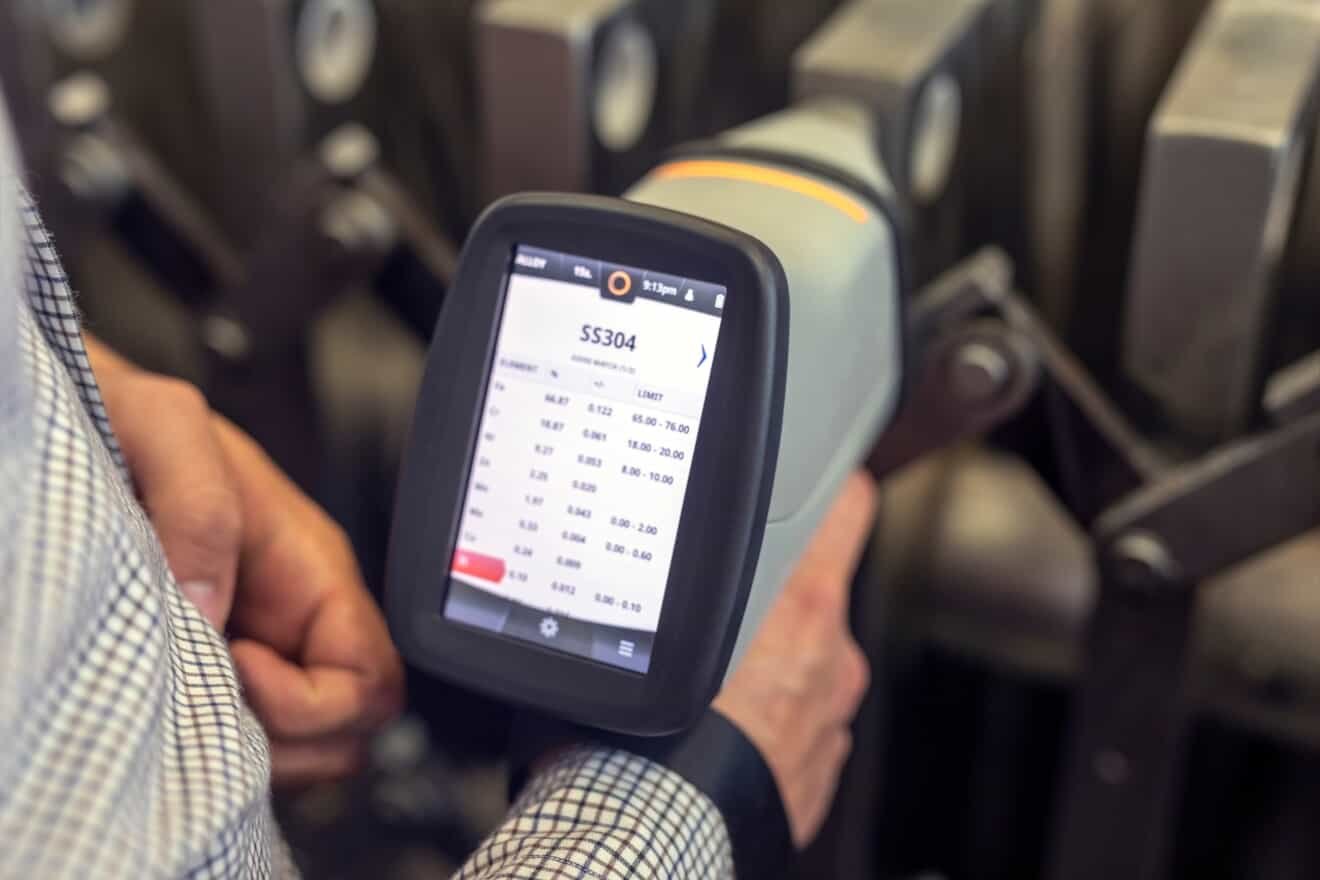
5 Key Buying Factors for Best Handheld XRF Analyzers in 2025
In 2025, handheld XRFs aren’t equal. Detector type, light-element performance, usability, ruggedness, and long-term support each influence how quickly you obtain results and how defensible they are.
SDD Detectors
- About ten times higher count rate, which gives faster and cleaner results
- Strong on light elements such as Mg, Al, Si, P, S
- Higher upfront cost, but pays back in throughput
- Best for scrap yards, PMI, and soils with light elements
PIN Detectors
- Lower count rate, which means slower and less precise on light elements
- Works well on heavier elements such as Cu, Ni, Fe
- Lower upfront cost
- Best for basic alloy ID where light elements don’t matter
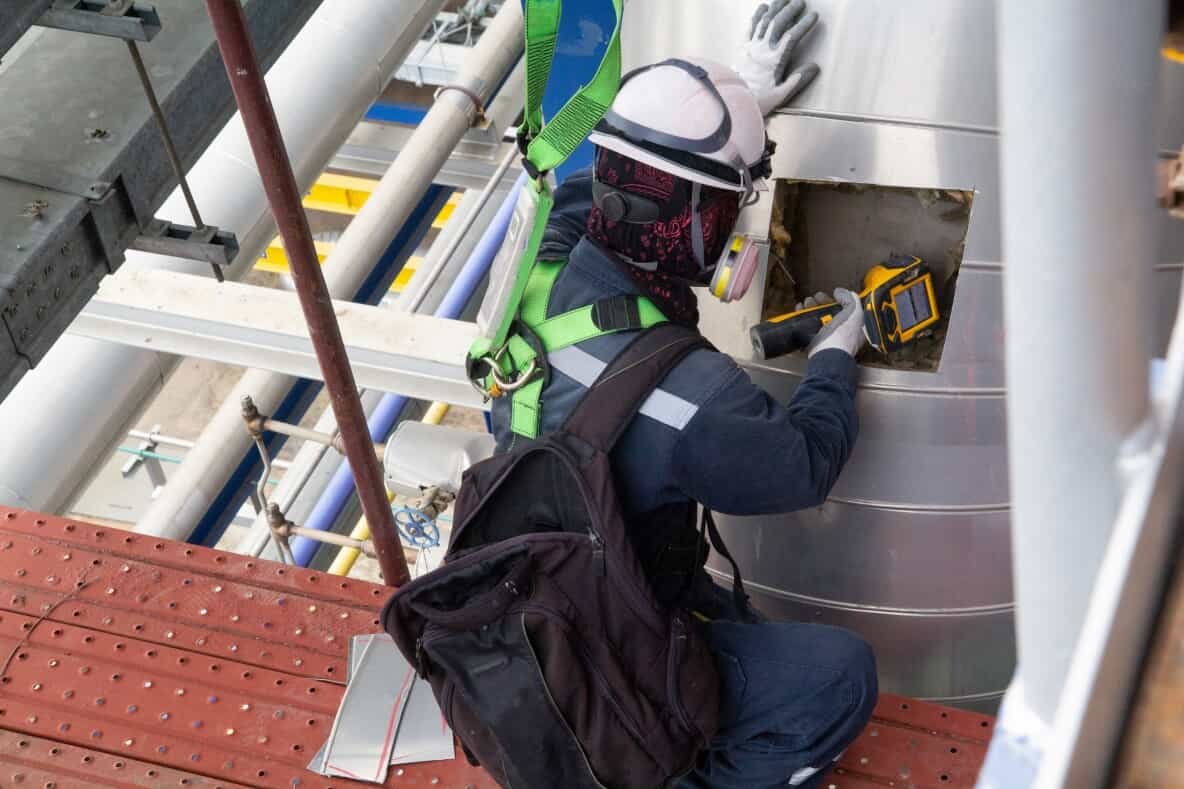
1. Detector Technology: SDD vs. PIN
Detector choice drives everything. Silicon drift detectors (SDDs) handle roughly 10 times the count rate of older PIN diodes. That speed lowers detection limits and improves precision for light elements, such as magnesium, aluminum, silicon, phosphorus, and sulfur.
In practice, SDDs provide cleaner reads in seconds, whereas PIN units would lag or miss the detail entirely. The tradeoff is cost, but the performance difference often pays back in throughput.
2. Application-Specific Performance
An XRF handheld analyzer doesn’t treat all elements equally.
Heavy elements like copper or nickel read clean and fast. Light elements (magnesium, aluminum, silicon, phosphorus, sulfur) require more tube power and an SDD to maintain accurate results. Lithium, beryllium, and boron are invisible to handheld XRF, no matter the model.
Match your analyzer to the elements that drive your workflow, whether as a handheld XRF metal analyzer or compliance tool.
3. Usability and Software
Software is where many workflows either succeed or fail.
A strong XRF gun should carry grade libraries that recognize alloys in seconds, cameras that keep welds in frame, and GPS with cloud sync for traceability.
Audit trails and report templates save compliance teams hours and reduce mistakes that cost money.
4. Ruggedness and Safety
Ruggedness is ROI. A handheld XRF analyzer with an IP54 or IP65 seal resists dust and moisture. Drop testing to military standards (MIL-STD-810G) ensures it continues to function correctly after a fall. Wide operating ranges (from –10 °C (14 °F) to 50 °C (122 °F)) keep jobs on schedule. Safety matters too: follow manufacturer guidance and licensing rules to protect your team and stay compliant.
5. Budget and Support
Look beyond purchase price to years of uptime, accuracy, and support. Detector type, calibration libraries, and tube power set the starting point, but service contracts, tube life, and turnaround time decide the long-term return.
A lower upfront figure may appear attractive, but it can conceal risks, such as slower read times for light elements, limited calibration coverage, or more challenging-to-service platforms. The smarter approach is weighing the total cost of ownership (throughput, serviceability, and defensibility in audits) against your workflow demands.
Here’s where a trusted supplier like Harper Surveying can help you verify service paths and match the analyzer to your workflow.
2025 Handheld XRF Tier Rankings
When scanning the tiers, consider trade-offs. S-Tier excels in speed, light-element clarity, ruggedness, and software, backed by strong service. A-Tier is high performance with one clear compromise. B-Tier is a reliable value.
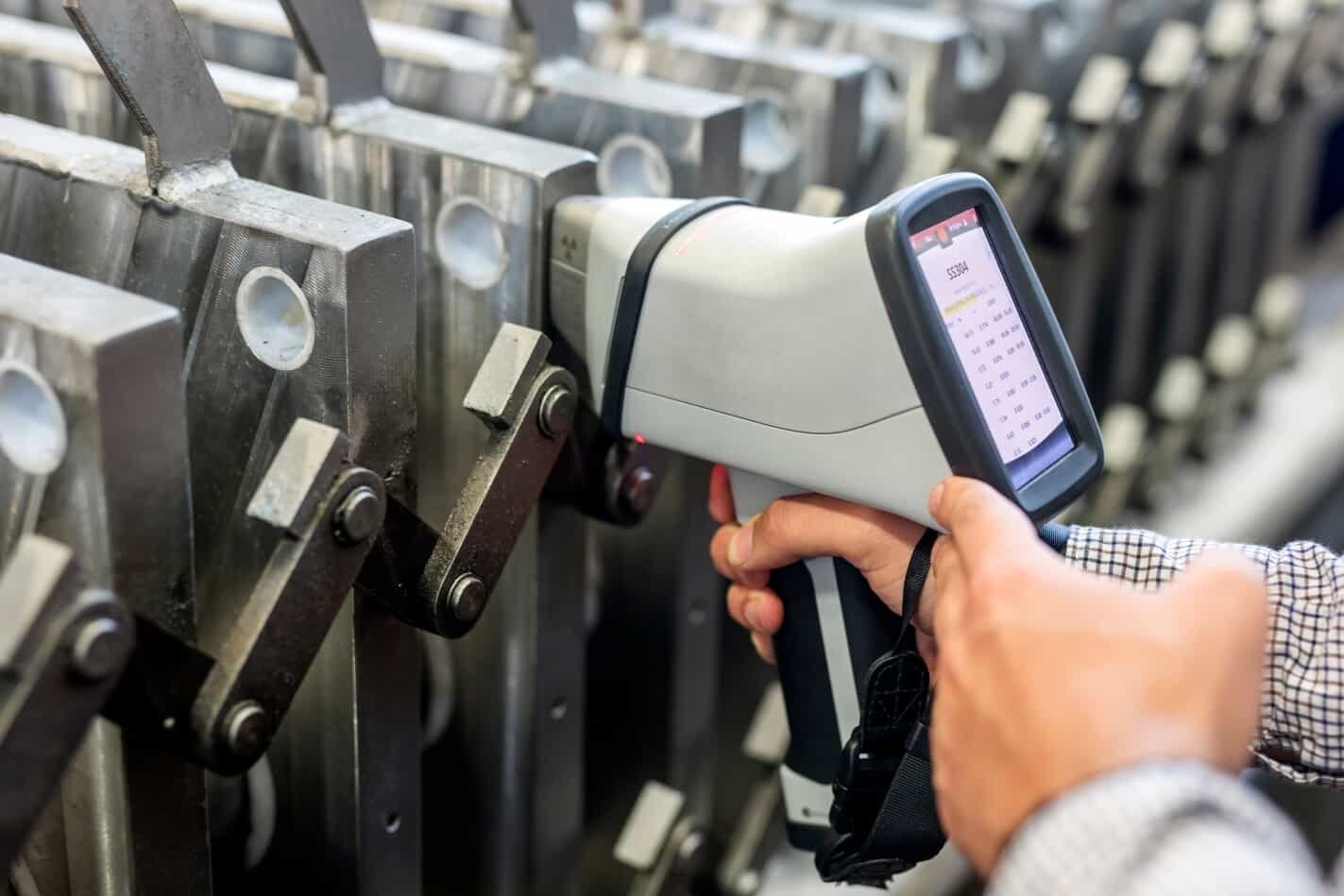
S-Tier
- Models: Thermo Niton XL5 Plus, Evident Vanta Max, SciAps X-550
- Best For: Scrap, PMI, compliance, all-around performance
- Ruggedness: IP54–IP55, MIL-STD drop tested
- Light-Element Performance: Excellent (Mg to S)
A-Tier
- Models: Thermo Niton XL3t GOLDD+, Bruker TRACER 5, Vanta Element-S, SciAps X-550 Geo, Viken Pb200e/Pb200i
- Best For: Geochem, PMI, compliance-specific jobs
- Ruggedness: Strong (IP54 and above), reliable in the field
- Light-Element Performance: Good (varies by model)
B-Tier
- Models: Thermo Niton XL2 Plus, Vanta Core/Element, SciAps X-200/X-50, Bruker S1 TITAN 600
- Best For: Mid-volume alloy ID, budget operations
- Ruggedness: Solid (IP54 on most)
- Light-Element Performance: Moderate
Best of the Best (S-Tier)
Thermo Scientific Niton XL5 Plus
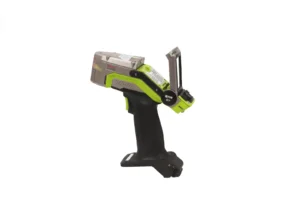
A 5-watt tube and large-area drift detector give the Niton XL5 Plus speed and accuracy on magnesium through sulfur. Its dual cameras keep welds and tiny parts in frame, while a hot-swap battery keeps jobs moving without shutdowns.
Use it if you need one analyzer that handles scrap, PMI, and compliance without compromise.
Evident Vanta Max

Lower detection limits and MIL-STD toughness make it reliable in dusty, rainy, and hot environments. Wireless tools and audit-ready reports reduce hours spent on compliance.
Use the Evident Vanta Max if uptime and defensible results are your priority.
SciAps X-550

A high-power tube with a light-element setting sorts aluminum in one to two seconds. Residual checks stay sharp.
Use SciAps X-550 if speed on magnesium, aluminum, and sulfur drives your day.
High Performance (A-Tier)
Thermo Scientific Niton XL3t GOLDD+

Proven platform, improved light-element response, and broad calibration sets. Not as fast as S-tier, but deeply supported.
Use XL3t GOLDD+ if you want wide alloy coverage without flagship cost.
Bruker TRACER 5
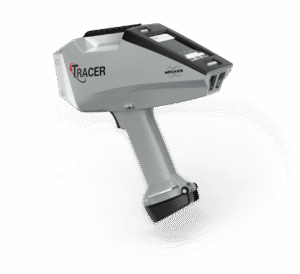
Helium, vacuum, and a graphene window open trace work that most handhelds can’t touch. Small-spot collimation adds precision.
Use TRACER 5 if you need lab-style flexibility in the field.
Evident Vanta Element
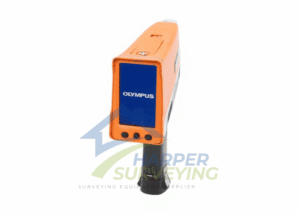
Adds an SDD for stronger magnesium-to-sulfur reads in a rugged Vanta body.
Use Evident Vanta Element if you want a dependable alloy ID with some light-element assistance at a lower cost.
SciAps X-550 Geo
Optimized for soils and ores. You’ll wait longer, but results hold up for geochem decisions.
Use the SciAps X-550 Geo if geochemistry is the primary focus, rather than alloys.
Viken Pb200e and Pb200i
HUD-aligned workflows with an NRC exemption cut paperwork. Tuned for compliance, not alloys.
Use if lead paint inspections are your core work.
Reliable Workhorses (B-Tier)
Thermo Niton XL2 Plus
Rugged enough for PMI and basic soils, and steady enough for daily use.
Use it if you need a reliable alloy ID without flagship spend.
Evident Vanta Core and Vanta Element
Maintain the Vanta toughness while trimming unnecessary elements. Use one if you want dependable throughput and ROI in mid-volume checks.
SciAps X-200 and X-50
Budget units with SDDs, and slower on light elements than higher tiers.
Use it if cost is your primary concern and common grades are your focus.
Bruker S1 TITAN 600
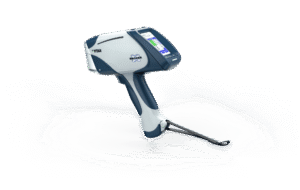
Accurate across standard metals, with manufacturer support. Use Bruker S1 Titan 600 if you want a proven handheld XRF with solid value.
Best Models by Application
Scrap and Recycling
Scrap yards live on speed. Every second you shave off an alloy ID protects the margin. The Thermo Niton XL5 Plus and Evident Vanta Max both deliver fast, reliable reads on aluminum families and catch residuals that shift value. Rugged IP ratings and drop-tested builds ensure they continue to run in harsh environments.
Mining and Geochemistry
Geologists need trace sensitivity. The Bruker TRACER 5 offers helium purge, optional vacuum, and a small-spot collimator, giving it flexibility on elements most handhelds miss. The SciAps X-550 Geo features high tube power and software optimized for soils and ores, delivering stable results over extended duty cycles.
PMI and Quality Control
Plant teams rely on handheld XRF analyzers to verify alloys before welds are put into service.
The Evident Vanta Core offers a rugged and affordable solution for daily grade checks. For faster reads on sulfur, phosphorus, and other residuals, the SciAps X-550 gives results in seconds. Use one if your priority is confirming alloys before production risk escalates.
Compliance and Lead/RoHS
Compliance teams need handheld XRF analyzers that deliver defensible results against tight thresholds. Evident Vanta units screen for RoHS elements with audit-ready reports. The Viken Pb200e and Pb200i follow HUD workflows and carry an NRC license exemption, cutting administrative hurdles.
Use one if your role depends on proving compliance to regulators without losing uptime.
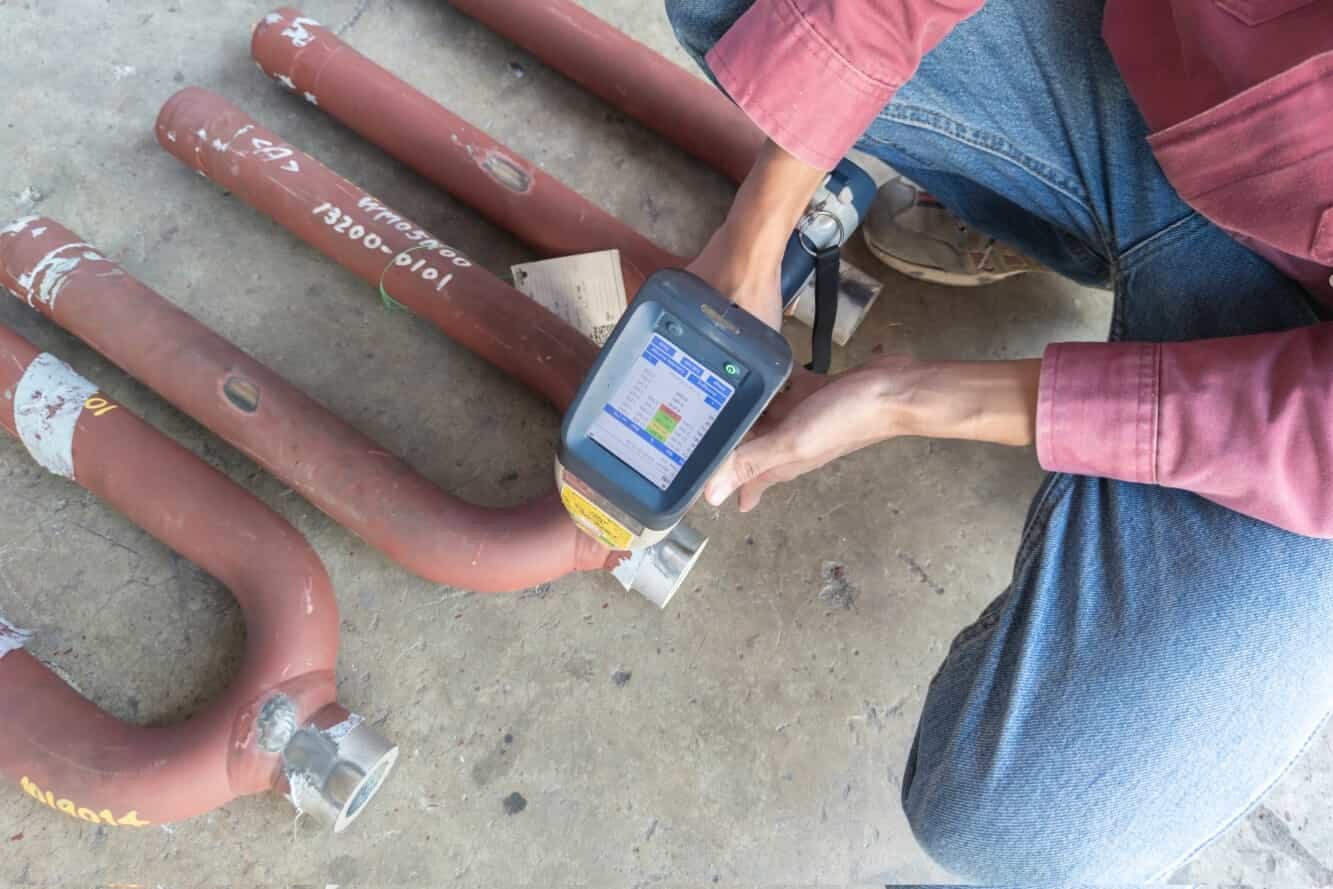
New vs. Pre-Owned: What Buyers Should Know
A pre-owned handheld XRF analyzer can lower entry cost and deliver ROI faster, but only if the platform is still serviceable.
Proven models like the Niton XL3t, Bruker S1 Titan 600, or Olympus Delta remain in circulation because they strike a balance between accuracy and a clear support path. You’ll also see legacy Olympus Vanta M-, L-, and C-Series models on the used market, with varying conditions and varying levels of support by unit. The risks sit with older units that lack parts or service coverage.
Check detector health, X-ray tube hours, calibration libraries, battery life, data handling, and ownership paperwork before making a purchase commitment. A trusted supplier like Harper Surveying verifies these steps and matches used or new options to your workflow.
Find the Right Handheld XRF Analyzers for Your Application at Harper Surveying
The “best” handheld XRF analyzer is the one matched to your matrix, elements, and duty cycle, not the most expensive model.
We help you cut through the noise. At Harper Surveying, our role is to match handheld XRF analyzers to real-world workflows and provide them with long-term support.
Explore our XRF lineup to create a shortlist tailored to your materials, throughput, and compliance requirements.